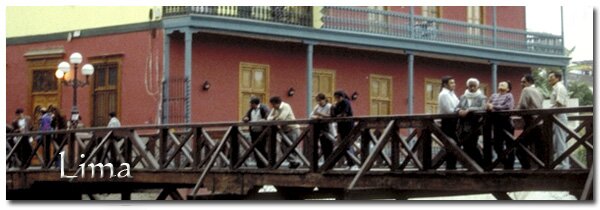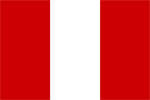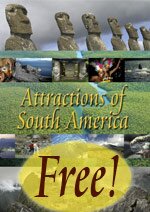Lima
Lima was founded by Francisco Pizarro on January 18, 1535 near a lush valley and few miles from the Pacific Ocean. It was a strategic choice that gave the Spanish conquistadores control over their colony.
The historic center of Lima is one of Peru's main tourist destinations. It is located mainly in downtown Lima and the Rímac District, in central Lima.
The city of Lima was declared a UNESCO World Heritage Site in 1988 due the large number of historical buildings dating from the Spanish colonial era, a small number of which have now been restored.
Lima became the most important city in the Spanish Viceroyalty of Peru, which encompassed nearly all of Spain's possessions in South America during the colonial era (mid 1500s to early 1800s).
Peru Tours: See all our Peru tours
 Trujillo, Chiclayo & Cajamarca - TCC Trujillo, Chiclayo & Cajamarca - TCCTOUR TYPE: 4**** Tour TRAVEL TO: Peru |
8 Days | Price and Tour Details |
 Incas, Alpacas & Lake Titicaca - SAFP1 Incas, Alpacas & Lake Titicaca - SAFP1TOUR TYPE: Small Group Tour TRAVEL TO: Peru |
10 Days | Price and Tour Details |
 Peru Adventure Tour - SA1104 Peru Adventure Tour - SA1104TOUR TYPE: Local Transport Tour TRAVEL TO: Peru |
21 Days | Price and Tour Details |
The city's cultural importance was contested perhaps only by Bogotá, and its architecture and political importance in Latin America were equalled only by Mexico City.
The Plaza de Armas (Plaza Mayor) was once considered the heart of old Lima, this grand plaza features many important architectural monuments and buildings including a magnificent bronze fountain dating from 1650, the Archbishop's Palace with its elegant balconies and the Government Palace dating from 1924.
 The Church of San Francisco (Iglesia de San Francisco) was built around 1674 and is known for its catacombs that contain the remains of more than 70,000 people and a magnificent library that houses thousands of antique texts.
The Church of San Francisco (Iglesia de San Francisco) was built around 1674 and is known for its catacombs that contain the remains of more than 70,000 people and a magnificent library that houses thousands of antique texts.
Check out some of these wonderful budget hotels and splendid hotels in Lima!
 There are more than 1,600 colonial era balconies in the buildings of the historic center. To help maintain and conserve them, the Municipality of Lima invited companies and private institutions to "adopt" these balconies, which are particularly harmonious and give originality to this part of the city.
There are more than 1,600 colonial era balconies in the buildings of the historic center. To help maintain and conserve them, the Municipality of Lima invited companies and private institutions to "adopt" these balconies, which are particularly harmonious and give originality to this part of the city.
Lima is the place to be to visit some of the best museums of South America:
The National Museum of Archaeology, Anthropology and History has an extensive archaeological collection that includes more than 100,000 items from pre-Hispanic cultures including ceramics, metals, funeral offerings and carved stone figures.
The Gold Museum (Museo de Oro del Peru), is my favorite. This private collection, assembled by Miguel Mujica Gallo, contains a wide assortment of pre-Columbian gold handicraft, weapons, ceremonial objects, jewelry and gold from both the Incas and pre-Inca civilizations.
The Rafael Larco Herrera Museum (Museo Rafael Larco Herrera) houses an impressive collection of ceramics plus exhibits of mummies, a gold room, textiles made from feathers and a unique collection of pre-Columbian erotica depicting the sexual practices of a number of Peruvian cultures.
----------
----------
Attractions of LimaNational Museum of Archaeology, Antropology and History Plaza de Armas Gold Museum (Museum de Oro de Peru) Iglesia de San Francisco Rafael Larco Herrera Museum Iglesia de San Pedro Museo Amano Miraflores Convento de Los Delcalzos Museo de La Nación Lima Cathedral San Isidro Museo de la Inquisición Museum de Arte Colonial Pedro de Osma Puente de Los Suspiros Parque Municipal |
Learn more about Lima here
----------
----------
Other Must See Places in Peru
| Machu Picchu | Cuzco | Arequipa |
 |
 |
 |
Arequipa
Cajamarca
![]()
Lake Titicaca
Trujillo
Food from Peru
----------
© All photographs by Mark Van Overmeire












